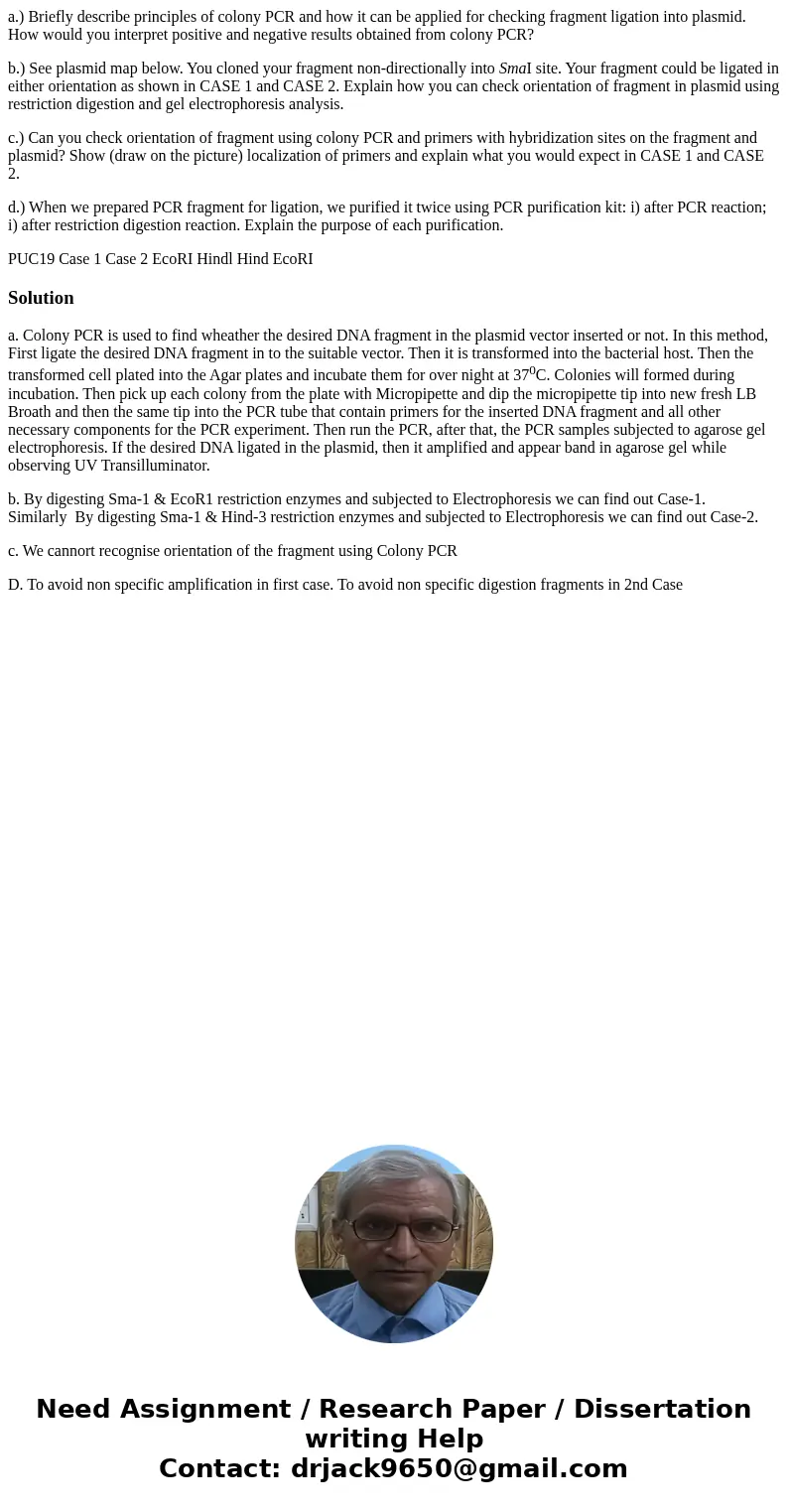a Briefly describe principles of colony PCR and how it can b
a.) Briefly describe principles of colony PCR and how it can be applied for checking fragment ligation into plasmid. How would you interpret positive and negative results obtained from colony PCR?
b.) See plasmid map below. You cloned your fragment non-directionally into SmaI site. Your fragment could be ligated in either orientation as shown in CASE 1 and CASE 2. Explain how you can check orientation of fragment in plasmid using restriction digestion and gel electrophoresis analysis.
c.) Can you check orientation of fragment using colony PCR and primers with hybridization sites on the fragment and plasmid? Show (draw on the picture) localization of primers and explain what you would expect in CASE 1 and CASE 2.
d.) When we prepared PCR fragment for ligation, we purified it twice using PCR purification kit: i) after PCR reaction; i) after restriction digestion reaction. Explain the purpose of each purification.
PUC19 Case 1 Case 2 EcoRI Hindl Hind EcoRISolution
a. Colony PCR is used to find wheather the desired DNA fragment in the plasmid vector inserted or not. In this method, First ligate the desired DNA fragment in to the suitable vector. Then it is transformed into the bacterial host. Then the transformed cell plated into the Agar plates and incubate them for over night at 370C. Colonies will formed during incubation. Then pick up each colony from the plate with Micropipette and dip the micropipette tip into new fresh LB Broath and then the same tip into the PCR tube that contain primers for the inserted DNA fragment and all other necessary components for the PCR experiment. Then run the PCR, after that, the PCR samples subjected to agarose gel electrophoresis. If the desired DNA ligated in the plasmid, then it amplified and appear band in agarose gel while observing UV Transilluminator.
b. By digesting Sma-1 & EcoR1 restriction enzymes and subjected to Electrophoresis we can find out Case-1. Similarly By digesting Sma-1 & Hind-3 restriction enzymes and subjected to Electrophoresis we can find out Case-2.
c. We cannort recognise orientation of the fragment using Colony PCR
D. To avoid non specific amplification in first case. To avoid non specific digestion fragments in 2nd Case

 Homework Sourse
Homework Sourse